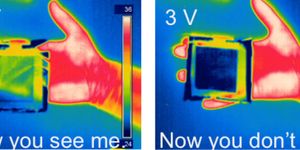Can a Car Lull You To Sleep Behind the Wheel?
Any parent who has had a colicky baby can tell you that the vibrations of a moving car can soothe even the crankiest child into sleep. Now researchers are finding that vibrations in cars are a hazard for adult drivers as well. The study, conducted by researchers at RMIT University in Melbourne Australia investigated the issue of car vibrations and drowsy driving.
In Australia, about 20% of fatal car accidents are caused, at least in part, by driver fatigue. Professor Stephen Robinson of RMIT is the lead author of the work. He explained, “We know 1 in 5 Australians have fallen asleep at the wheel and we know that drowsy driving is a significant issue for road safety. When you're tired, it doesn't take much to start nodding off and we've found that the gentle vibrations made by car seats as you drive can lull your brain and body.
Our study shows steady vibrations at low frequencies -- the kind we experience when driving cars and trucks -- progressively induce sleepiness even among people who are well rested and healthy. From 15 minutes of getting in the car, drowsiness has already begun to take hold. In half an hour, it's making a significant impact on your ability to stay concentrated and alert.”
Associate Professor Mohammad Fard worked with Professor Robinson. The team of scientists had 15 study participants who drove a virtual route in a simulator where vibrations on the seat could be monitored. The route was a typical two-lane highway where many drowsy driving accidents happen. The monotony of a long road, with very little variation, can be a factor in driver fatigue. The simulator was set up on a deck that was engineered so that vibrations at different frequencies could be tested. The volunteers were tested twice -- once with vibrations at low frequencies (4-7Hz) and once with no vibration.
The tired feeling that comes along with the vibrations of a moving car makes it more difficult for drivers to focus and stay on task, both mentally and physically. The body adjusts to this and has to work harder to compensate and that can be detected in changes in the driver’s heartbeat. The team recorded data on the drivers’ heart rate variability (HRV), during a 60-minute test.
Within 15 minutes of beginning the virtual drive, volunteers were showing signs of fatigue. It became more pronounced by 30 minutes and at 60 minutes, fatigue was at peak levels in the study participants. Going forward, the scientists want to have a larger sample group and add in other factors like sleep disorders or health issues of drivers. Professor Fard stated, "Our research also suggests that vibrations at some frequencies may have the opposite effect and help keep people awake. So we also want to examine a wider range of frequencies, to inform car designs that could potentially harness those 'good vibrations'." See more of the work and the driving experiments in the video below.
Sources: RMIT University Phys.org Journal Ergonomics









